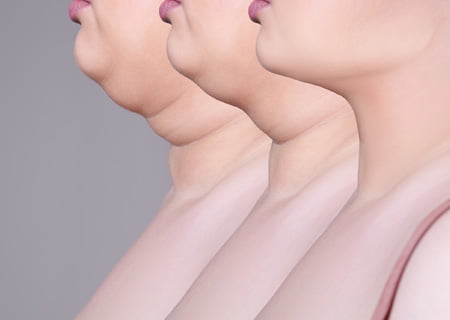Rethinking My Jawline: An Intimate Inquiry

I never imagined my chin would one day feel like an unsolved riddle — a stray element in an otherwise familiar face. Yet, after many moments of self-scrutiny, I found myself wondering: Could the very line of my lower face be gently reengineered to better mirror who I truly am?
A Moment of Unconventional Curiosity
There was a time when I regarded my chin as simply part of the package — nothing more than a structural afterthought. Over time, however, I noticed a persistent dissonance in the way my lower facial contour harmonized with the rest of me. It wasn’t that I felt incomplete or undeserving; rather, it was an odd, almost mathematical misalignment, as if my chin had charted its own course. In one late-night moment of introspection, I asked myself, “What if I could recalibrate that final edge? What if a chin implant could offer a new geometry to my reflection?”
Charting a New Course
This isn’t the sort of question one tosses out casually. It’s not about succumbing to fleeting beauty standards or chasing a mythical ideal. Instead, it’s a personal probe into how our physical contours might be nudged — ever so slightly — toward a configuration that feels less accidental and more intentional. I wasn’t seeking a radical reinvention; I was curious whether a modest adjustment might align my features in a way that feels less jarring, more integrated.
People also search
In this inquiry, the chin becomes more than just bone and skin — it transforms into a piece of living architecture that might be remodeled to tell a truer story of self. The thought of altering something so inherently “mine” is both unsettling and oddly liberating.
A Glimpse Into the Process
Modern chin implants are not clumsy blocks inserted without thought. They’re a study in careful, almost bespoke engineering. The implant is crafted from materials that are meant to merge seamlessly with one’s own bone — almost as if the body could learn to read a new script without feeling alien. The idea is not to impose a new identity on your face but to refine an element that has long operated on its own unsynchronized logic.
Imagine it as a delicate recalibration — an adjustment that doesn’t shout for attention, but rather invites a reexamination of the whole. It’s like tweaking a sentence’s punctuation to reveal a hidden meaning, rather than rewriting the entire paragraph.
Confronting the Notion
I’ll be honest: the thought of altering my chin was not born out of vanity. It was an exploration—a quiet conversation with my own reflection about whether a small physical tweak could echo an inner sense of equilibrium that I’ve always craved but never quite articulated. The question wasn’t about erasing my past; it was about reconsidering how the subtle details of my visage might speak more clearly of who I am today.
I began to see my chin not as a fixed fixture, but as a variable — one that might be adjusted, refined, or even reinterpreted with modern technique. The decision, if taken, would be a deliberate, almost scientific experiment in self-expression — a way of asking if a minor alteration in shape might allow my features to converse more fluently with one another.
The Aftermath of a Decision
The day-to-day reality of a chin implant isn’t marked by dramatic transformations. Rather, it’s a slow, almost imperceptible evolution — a gentle realignment that settles over time. Recovery, I was told, would be less about overcoming drastic changes and more about embracing a new contour as a natural part of my identity. In the days following the procedure, there might be moments of discomfort or uncertainty, but ultimately, the implant is meant to integrate with your body, almost as if it were always meant to be there.
It’s a process that leaves you with a slight shift in how you see yourself — a recalibration that, after the initial adjustment, becomes an intrinsic part of your personal narrative. It isn’t a reinvention; it’s a subtle reordering of elements that have always been part of you.
A Question for the Quiet Hours
Now, I find myself with a question that lingers in the soft hours before dawn: Can a modest, carefully considered change in the structure of my face bring about a more authentic dialogue between my inner self and the image I see in the mirror? This isn’t a pursuit of perfection in any conventional sense — it’s an invitation to consider that even the smallest detail might be rethought, reformed, and integrated in a way that feels uniquely true.
For those who, like me, occasionally wonder if the way we are built might be fine-tuned to reflect our internal landscape more accurately, the idea of a chin implant becomes a gentle proposition — a quiet experiment in self-definition rather than a surrender to societal expectations.
An Invitation to Reflect
If you ever find yourself pausing before the mirror, not out of insecurity, but out of a desire to understand the geometry of your own being, perhaps this is a question worth exploring. There’s something profoundly human in the willingness to reexamine even the smallest details of our appearance, to ask whether a slight change could allow us to see ourselves in a clearer, more cohesive light.
This isn’t a manifesto for radical change or a call to conform to any external ideal. It’s simply a personal invitation — a query directed inward — to consider whether a gentle refinement might unlock a new chapter in the way we carry our own story.
In the end, the decision to explore a chin implant is not about seeking approval or mimicking an idealized form. It’s about engaging in a quiet, personal inquiry into how the final curve of our face might be reimagined to better tell the story of who we are. For me, that question remains open — a soft murmur in the reflective silence of early morning, an invitation to consider that even the smallest adjustments might have meaning.
I leave you with this thought: sometimes, the journey to understanding ourselves begins with rethinking even the most overlooked details. What if the very edge of your face could be gently reconfigured to echo more faithfully the unique narrative you carry within?
















